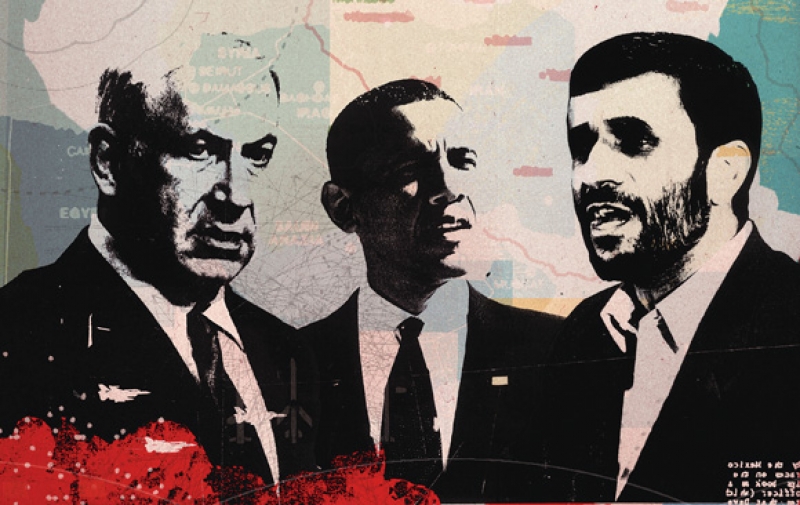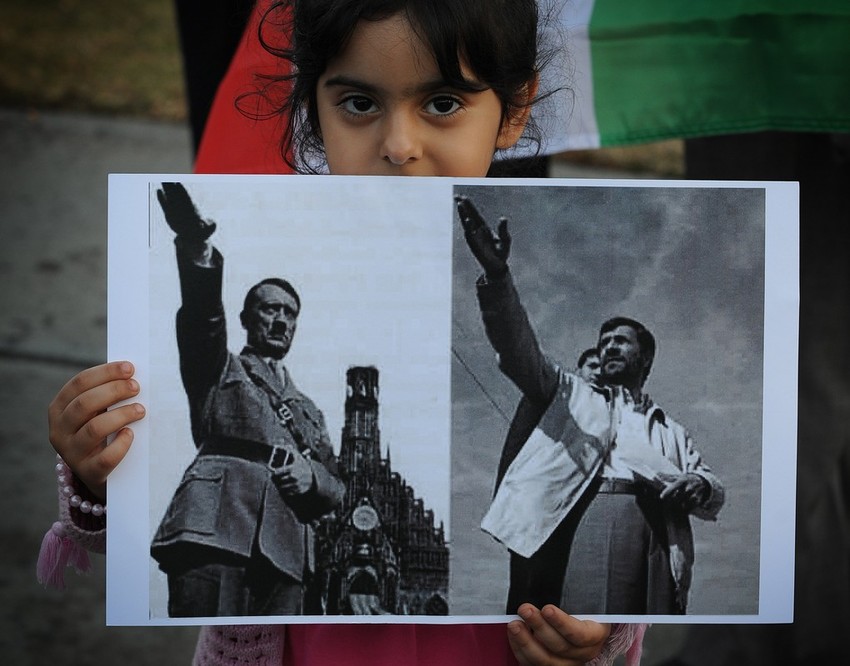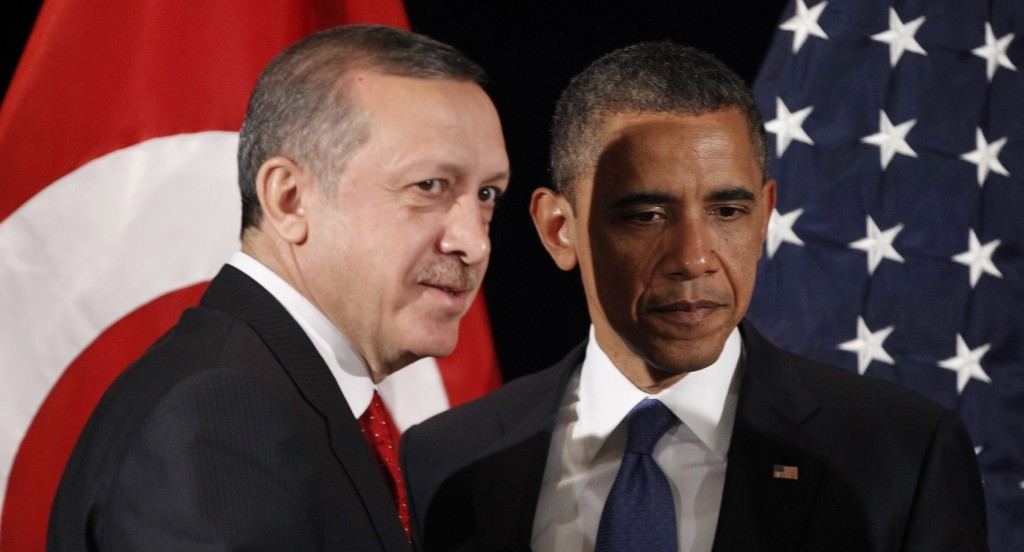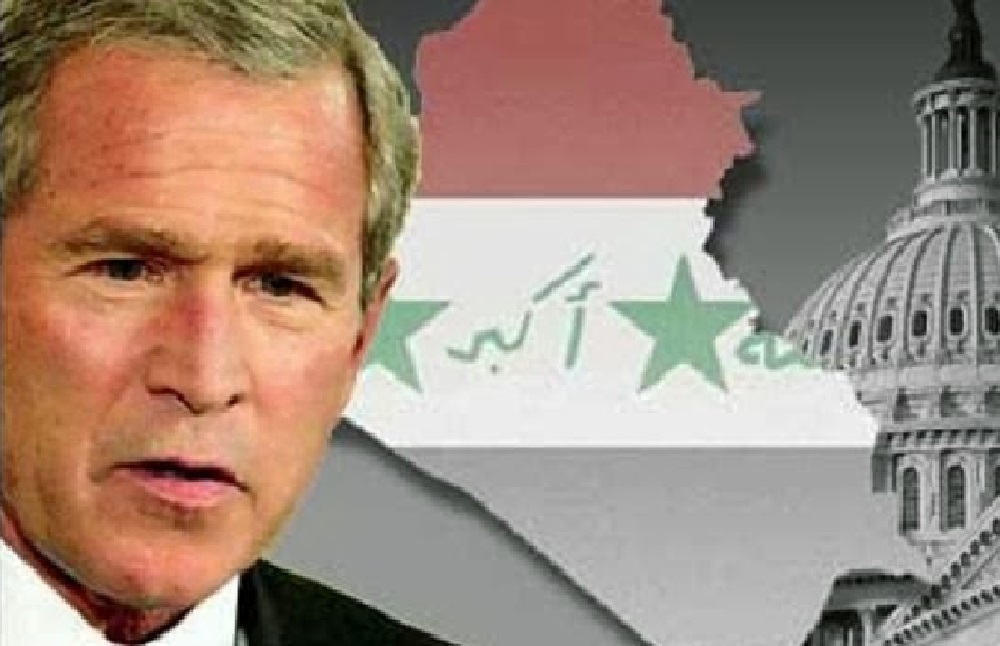The Point of No Return
Debkafile recently disclosed that it was Israeli Prime Minister Binyamin Netanyahu, not the Obama administration, who decided to postpone the largest joint U.S.-Israeli military exercise Austere Challenge 12 ever planned between the two countries. That exercise had been scheduled for April 2012, and was to have tested the level of coordination between the two armies in missile defense in the event of a war with Iran or a regional conflict. Netanyahu’s concern is that the presence of a large U.S. military contingent in Israel would inhibit his country’s ability to conduct a preemptive strike on the Iranian nuclear reactors.
His decision to postpone the exercise was based on several developments not the least of which was his having taken no action against Iran for its capture of the RQ-170 stealth drone on December 4th; his silence over Iran’s initiation of 20% uranium enrichment at the underground Fordo facility near Qom; his silence about the recent Iranian assassination attempt on the life of a Saudi diplomat in Washington; his reluctance to send U.S. aircraft carriers into the Persian Gulf through the Strait of Hormuz for fear of provoking a confrontation with Iran in an election year; and his hesitation in approving immediate sanctions on Iran’s central bank, commercial banks, and energy sector – a hesitation and lack of determination in each case undoubtedly noted by the Iranians as well.
Israeli military strategists are concerned that the U.S. may be unwilling to undertake such a strike regardless of how many “red lines” are crossed by Iran despite what appears to be a massive military and naval build-up just south of the Strait of Hormuz and between Yemen and the Horn of Africa, the Bold Alligator 2012 exercise off the East Coast of the United States mimicking amphibious landings on a fictitious Iranian shore, a new U.S. Depth Command set up for special operations behind enemy lines, and the recent joint exercise in Israel demonstrating the interoperability of the U.S. Aegis and Israel’s Arrow 4 ballistic missile detection and tracking systems.
Contrary to these apparent pre-war maneuvers, the policy of the Obama Administration continues to be based on the carrot and stick approach – diplomatic engagement with the mullahs coupled with international sanctions and the build-up of a large military and naval presence in and around the Persian Gulf all aimed at compelling the Iranians to abstain from building a nuclear weapon. The Administration believes that it can force the Iranians to back away from their quest, or, at worst, that it can contain Iranian ambitions should it produce an atomic bomb. What it has received in return for its engagement efforts, however, is contempt, insults, genocidal threats against Israel, terrorist plots in our own country, more support for the terrorists killing our troops in Iraq and Afghanistan, and an intensified effort to acquire nuclear weapons …………. all of which leads to the question: “Will any country rely on Western promises to protect them from a nuclear Iran after the same promises failed to curtail a conventionally-armed Iran?” (1)
Netanyahu is especially concerned that U.S. hesitation is based on the premise that Iran has not yet made the decision to build a nuclear weapon. Even if that is the case, reports on recent Iranian advances in uranium enrichment suggest that the time lag between a decision to construct a nuclear weapon and its actual construction may be only a matter of months. As Bret Stephens wrote recently: “You may not be able to divine whether a drinker, holding a bottle of Johnnie Walker in one hand and a glass tinkling with ice in the other, actually intends to pour himself a drink. And perhaps he doesn’t. But the important thing, at least when it comes to intervention, is not to present him with the opportunity in the first place.” From Netanyahu’s perspective, by postponing the decision to take out Iran’s major nuclear facilities, the U.S. is assuming that the Iranians will not move to build their bomb – something we won’t find out until after they’ve conducted their first nuclear test – by which time, it will be too late.
In effect, waiting for intelligence about getting a nuclear weapon – instead of preventing nuclear weapons capability – sets the red line where a violation can neither be timely detected nor effectively reversed, as the North Korea experience demonstrates. It should be remembered that Western intelligence discovered the Fordo underground nuclear facility in mid-2009 – a full eighteen months after secret construction on the site had begun. They also got the timing wrong on China in the 1960s, India in the ’70s and Pakistan in the ’80s. To this day, even after North Korea has conducted two nuclear tests, no one is sure whether the country’s engineers actually know how to make and deliver a real, working bomb.
The only question is when can Iran produce a nuclear weapon, and the reality is, it is in a position to do so whenever it chooses…..and quickly. (2) Greg Sheridan points out correctly in The Australian: “In Jerusalem, Washington and Tehran, three different clocks are running, but they are all set to strike midnight this year…..This is the most explosive mixture the world has seen probably since the Cuban missile crisis.”
The U.S may be prepared to run the risk of buying more time believing it can force the Iranians to stop their quest for a bomb due to the effects of increased international economic and financial sanctions, but Israel cannot given the existential nature of the threat posed by a fanatical Iranian Islamist regime that embraces the Shia tradition of martyrdom, is a breath away from developing a nuclear weapon and delivery system, and is messianically committed to Israel’s destruction. The stakes are radically different for the U.S. and Israel, and no consultations can change that asymmetry.
Jewish history has taught the country that when an enemy says it intends to “wipe Israel off the face of the earth,” it is no idle threat. Israelis know full well that genocidal anti-Semitism wasn’t buried in the ashes of Auschwitz, and in the Islamic world, such calls continue to be acceptable discourse. As former Israeli Prime Minister Begin told the Reagan Administration in the wake of the 1981 bombing of Iraq’s Osirak reactor: “No “sword of Damocles” is going to hang over our head.” Nothing has changed over the intervening three decades. From the Israeli perspective, the sanctions have come too late.
Iran’s uranium enrichment shell-game
Even if the Iranians have not actually constructed a nuclear weapon, there is little doubt based on recent revelations that they have chosen a path that will lead to its construction in a very short period of time. In February 2010, intelligence reports began surfacing that Iranian nuclear engineers, under deep cover, were working full speed on the uranium enrichment centrifuge facility at Natanz (producing 20% enriched uranium – far in excess of what Iran’s civilian needs require) and at the Parchine nuclear and military laboratories in northeast Tehran where much of the work on nuclear bomb components and operational warheads is being conducted – most notably research on a neutron initiator using Uranium Deuteride (as disclosed in a May 2011 International Atomic Energy Agency Report) – the sole purpose of which is to trigger a nuclear reaction in a warhead. On August 25th, 2011, the German daily Suddeutsche Zeitung reported that North Korea had in fact supplied Iran with a highly precise computer to help simulate such a nuclear reaction.
The May IAEA Report also disclosed new information on the design of missile warheads. Documentary evidence, it said, suggested that Iran had conducted “studies involving the removal of the conventional high explosive payload from the warhead of the Shahab-3 missile and replacing it with a spherical nuclear payload.”
Anticipating a possible attack on its nuclear facilities, Iran began shifting its uranium enrichment production to its deep underground mountain bunker at Fordo and continues enriching uranium to 20% purity – far beyond the amount needed for nuclear power. According to experts in the field, nuclear bombs require uranium enriched to 90%, but reaching 20% purity simplifies the process and shortens the time needed for what is termed a nuclear weapons “break-out”.
In a November 2011 Report issued by the Wisconsin Project, concern over the extent of uranium enrichment took on a new dimension. That Report noted: “Based on the amount of low-enriched uranium Iran has stockpiled, and the amount it is believed to be producing each month, the Wisconsin Project estimates that by December 2008, Iran had accumulated enough U-235 to fuel one bomb – assuming Iran decided to further enrich the low-enriched material to weapon-grade. The Project further estimates that by the end of 2009, Iran had enough U-235 to fuel a second bomb; that Iran had enough of this material for a third bomb by August 2010; that Iran had enough of this material for a fourth bomb by April 2011; and that Iran had enough of this material for a fifth bomb by November 2011 – in each case assuming that Iran decides to raise the level of U-235 in its low-enriched uranium stockpile (3.5% U-235) to weapon-grade (90% or more U-235).”
At the same time, an exhaustive report issued by the International Atomic Energy Agency (IAEA) in November concluded that Iran was testing explosives, conducting experiments on detonating a nuclear weapon, had created actual computer models of nuclear explosions as far back as 2008 and 2009, was conducting experiments on nuclear triggers, and was working on weaponization – the processes by which a device can be adapted and hardened to fit into the nose-section of a missile. Specifically, it stated that Iran’s atomic experiments are “specific to nuclear weapons” and “includes the placing of radioactive material into a warhead and developing missiles.” “This information”, it said, “indicates that Iran has carried out activities relevant to the development of a nuclear explosive device.” Later that month, a trove of diplomatic documents obtained by Wikileaks showed deep concern among Iran’s neighbors over its nuclear program and revealed that American officials believed Tehran had obtained advanced missiles from North Korea that could allow it strike at Western European capitals and Moscow.
In January 2012, the head of Iran’s Atomic Energy Organization added fuel to the fire when he told Iran’s Kayhan daily that the Fordo uranium enrichment site was about to become operational. In response, Olli Heinonen, former Deputy Director-General of the IAEA wrote: “If Iran decides to produce weapons-grade uranium from 20%-enriched uranium, it has already technically undertaken 90% of the enrichment effort required. Growing the stockpile of 3.5% and 20%-enriched uranium, as Iran is now doing, provides the basic material needed to produce four to five nuclear weapons.” In short, Iran’s nuclear timeline no longer hinges on the calendar; it rests entirely upon a decision in Tehran to produce an atomic bomb – within months if desired.
Nor is Iran’s production of an atomic bomb the only area of concern. In February 2008, Heinonen gave a highly classified briefing in which he revealed Iranian documents that detailed how to design a warhead, possibly nuclear, for their 1,300-kilometer-range Shahab-3 missile that could be detonated at an altitude of 600 meters. Former CIA double agent Reza Kahlili who spent time as a member of Iran’s Revolutionary Guards Corps added in his book A Time to Betray that the Iranians have conducted numerous advanced ballistic missile tests off ships in the Caspian Sea – tests consistent with an electromagnetic pulse-style attack.
For the U.S., these developments should represent the sum of all its fears – the possible detonation of an Iranian nuclear device high in the atmosphere off the East coast, the effect of which could send a massive electromagnetic pulse over much of the eastern seaboard shutting down virtually all U.S.-based electronic defense systems, destroying America’s electrical grid, and shutting down everything from cars to computers to airplanes and refrigerators – not to mention the enormous loss of human life that would result from such a detonation were it to take place at the 600 meter level, the same level as the bomb that was dropped on Hiroshima.
With each passing day, it becomes more apparent that the sanctions designed to bring Iran’s economy to a stand-still and to force it to cease its nuclear enrichment efforts, combined with efforts to encourage Iranian nuclear scientists to defect, the covert campaign involving sabotaging parts of Iran’s nuclear supply chain, the string of explosions at Iranian missile testing sites, the assassination of key Iranian nuclear scientists, and the use of Stuxnet cyber attacks in June 2010 to stymie the logic board that controls the spinning centrifuges at its enrichment facilities have failed to stop the mullahs’ quest for nuclear weapons.
Should Iran achieve its protective nuclear shield, it will be free to advance its Islamist revolution throughout the world with impunity from attack. The mullahs may be fanatics, but they are not stupid. They understand the benefits of a nuclear shield and will not be dissuaded from their goal. After all, a nuclear-armed North Korea shelled a South Korean island, sank a South Korean destroyer, engaged in state-sponsored terrorism and criminal activities, shared its nuclear technology with rogue nations like Iran, and committed gross violations of human rights, yet it has not only enjoyed impunity from any sort of military action against it, but it has engaged in high-level diplomacy with the world’s great powers to bargain for economic aid and fuel deliveries for its cash-strapped country. The mullahs also understand that if they had had a nuke in 1980, Saddam Hussein would never have invaded Iran – leading to a war that lasted eight years and cost the country as many as a million lives. Israelis are not the only ones who say, “Never again.”
For years, U.S. Administrations have assumed that economic sanctions and diplomacy would produce a pliable negotiating partner in Iran, but in the final analysis, Iran perceives U.S. and European efforts at compromise as symptomatic of Western fear and weakness. In the Arab/Persian world, one who compromises is said to bring ‘aib, or shame, on himself. The same holds true for their countries. That’s why the Middle East is always in a state of tension. As a consequence, enhanced incentives have not only failed to entice Iran to give up its nuclear program, but they have had the reverse effect of validating its uncompromising policy against making any concessions in the nuclear arena.
Iran’s messianic quest
The comparison we continue to hear from Western leaders (other than Israelis) equates Iran with Japan. The analogy used is that Japan has developed the technology to produce a nuclear weapon, but has stopped short of producing one. The problem with the analogy is that the two countries are entirely different. Japan is a democratic country that is a closely allied with the United States, whereas Iran is ruled by messianic mullahs who are intent on making war on the U.S. and our regional allies in order to spread their totalitarian revolution around the Middle East. Thirty years ago, Ayatollah Khomeini warned, “Carter still has not comprehended what kind of people he is facing and what school of thought he is playing with. Our people is the people of blood and our school is the school of Jihad.” Any country that threatens to wipe out other countries, peoples or cultures should not be underestimated, nor should the West assume that Iranian ambitions can be “contained”. An aggressive Islamic theocracy armed with the bomb would cast a dangerous shadow over the region’s political transition. Iranian hegemony in the Middle East under a nuclear umbrella will not only threaten the world’s oil supply, but facilitate Iranian Islamic influence throughout the world.
The twentieth century was the deadliest century in history primarily because the West failed to assess the danger posed by fanatics.
In the end, neither sanctions, nor the country’s economic collapse, nor the threat of a military attack will dissuade Iran from its nuclear quest. Contrary to what the Obama Administration believes, this is not at all a rational regime. Irrational leaders have caused the deaths of millions of people, and the intentions of the ayatollahs have always been clear since they assumed control in Tehran thirty years ago. Difficult as it may be for Western leaders to comprehend, the mullahs believe they are on a messianic mission to create the apocalyptic chaos necessary to lay the foundations for the Coming of the 12th Imam or Mahdi and the establishment of a global Islamic caliphate. As Moshe Sharon wrote recently in the Jerusalem Post: “Ahmadinejad, as mayor of Tehran, built a spectacular boulevard through which the Mahdi would enter into the capital. There is no question that Ahmadinejad believes he has been chosen to be the herald of the Mahdi. Shiite Islam differs from Sunni Islam regarding the identity of the Mahdi. However both Shites and Sunnis share one particular detail about “the coming of the hour” and the dawning of messianic times: The Jews must all suffer a violent death, to the last one.” In other words, the non-rational behavior of the religiously fanatical Iranian leadership – characterized by their willingness to kill or be killed for their beliefs, and their belief that Allah has ordered them, at any cost, to destroy Israel, banish the Jews from the land, and restore Palestine to the Islamic Waqf (sacred trust) thereby consecrating it for future Muslim generations until Judgement Day – renders the deterrent concept of Mutually Assured Destruction (MAD) irrelevant. As Ayatollah Ruhollah Khomeini said shortly after the overthrow of the Shah and his return from exile to Iran: “I say let this land burn. Let this land go up in smoke. We do not worship Iran, we worship Allah” – meaning that any country, even Iran, can be legitimately sacrificed for the larger goal of ensuring that Shari’a (Islamic law) emerges triumphant and that a global Islamic caliphate be established.
Each day those centrifuges run brings Iran closer to achieving military nuclear capability and a nuclear shield under which it’s Islamic revolution will be exported to the world. Sixty million people died during World War II with weapons far more primitive than can be produced today. If lone suicide bombers are willing to sacrifice themselves for religious fanaticism, why then is it not beyond the realm of possibility that a leader like Ahmedinejad, protected by a nuclear shield, would be willing to sacrifice millions for the same beliefs? After all, this is the same regime that encouraged the “martyrdom” of thousands of Iranian children by placing yellow plastic “keys to Paradise” around their necks and having them run through Iraqi minefields during the Iraq-Iran War in the 1980s; the same regime that counts 15% of its population as “volunteer martyrs”; and whose President proudly states that no art “is more beautiful . . . than the art of the martyr’s death.” An Iranian Islamist regime armed with nuclear weapons will trigger a regional nuclear arms race in Turkey, Egypt and Saudi Arabia, destroy the non-proliferation treaty, and increase the danger of miscalculation that could bring on a nuclear exchange. A nuclear shield will allow it to escalate its destabilizing influence throughout the region and the world, threaten Israel and moderate Arab regimes, manipulate energy markets to its benefit, and pose as “guardian” of Muslim communities even beyond the Middle East. It may even share its nuclear technology with its non-state proxies – Hamas and Hezbollah – and some of the most unstable and belligerent regimes on earth. Given the mindset of those who rule the Islamic Republic, containment and deterrence are illusions.
The Wikileak cables from last year reveal that our conflict with Iran is about more than the nuclear issue. It is a sweeping theological confrontation permeated with imperialistic overtones. The mullahs have been at war with the West since seizing power in Iran in 1979 and have been involved in arguably every major terrorist atrocity against it since then. It is the West that has failed to appreciate the true nature of this war. We are confronted with a fanatical theological Islamist movement that will accept nothing less than the submission of Western civilization to Sharia law.
Time is running out, negotiations have proven fruitless, and sanctions are being circumnavigated by Cuba, Russia, China, Venezuela and possibly Greece, Italy, Spain and India who rely heavily on Iranian oil imports. Iran is stalling for time while enriching uranium to weapons-grade quality and closing in on a nuclear weapon, a delivery system, and a nuclear shield under which it intends to establish a global Islamic caliphate under its control. It is impervious to reason. Unfortunately, the idea that the most powerful weapon on Earth is in the hands of the most dangerous nation on the planet doesn’t seem to elicit any sense of urgency on the part of any nation in the world – except Israel.
We have reached the point of no return. There is no magical combination of sanctions that can induce the Iranians to halt their enrichment activities, nor has there ever been. As Melanie Phillips writes: “…What really threatens to bring the West to its knees is its own cultural hubris. Refracting everything in the world through the prism of its unshakeable faith in universal reason, it is incapable of recognizing or understanding religious fanaticism – and insists instead upon treating the fanatic as a rational actor. Ironically, it is this belief in reason which has led the West to behave so irrationally in refusing to acknowledge the evidence of the mortal threat to itself posed by Iran – and that there is no alternative to force if it is to be stopped.”
Nuclear capability is a red line that Israel has twice prevented its enemies (specifically Iraq and Syria) from crossing, and Iran won’t get across the line either. Israel will strike because it cannot live under the threat of annihilation from Iran. In the 1973 Yom Kippur War, it did not act in the face of information and indicators that an attack was imminent, and the ghosts of Israeli indecisiveness remain front and center in the Israeli psyche today. Israel will do anything to prevent Iran from acquiring nuclear weapons, and unless Iran caves in, an Israeli operation against Tehran’s nuclear sites is inevitable.
ENDNOTES
- See: Yossi Klein Halevi, “Why Israel Still Can’t Trust That Obama Has Its Back”, The New Republic, March 7, 2012
- German and Japanese intelligence sources on March 5, 2012 confirmed to Debkafile that Western intelligence has known for 11 months that North Korea had carried out at least one covert underground nuclear test in 2010 on an Iranian radioactive bomb or nuclear warhead. Shortly after the first test in April, a large team of Iranian nuclear experts arrived in Pyongyang to prepare the second one in May, after which Iran transferred to the North Korean nuclear energy commission the sum of $55 million. This would mean that Tehran, with North Korean aid, has already constructed and tested an atomic warhead.




